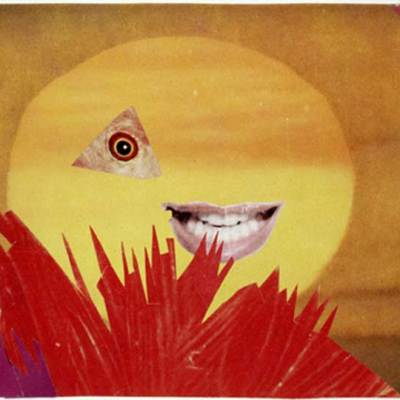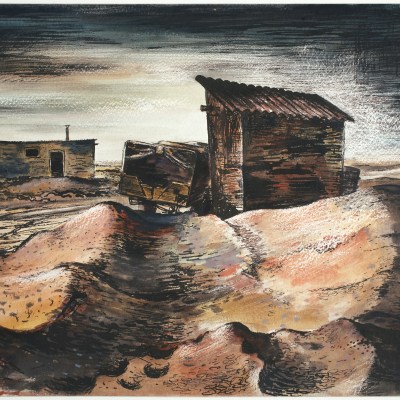The graphic designer, writer, editor, photographer, and researcher David King died earlier this month. His last book was a collection of John Heartfield’s pioneering photo montages. We reproduce our review of the publication (first published in the October 2015 issue of Apollo) here as a tribute.
David King is a collector – perhaps the collector – of visual documents of the Soviet experiment, housing hundreds of thousands of them in his Islington terrace. For over 40 years he has sought out photographs, books, posters, flyers, and pamphlets relating to the Russian Revolution, in particular, and its betrayal under Stalin, as well as other documents of the history of Communism. Parts of his archive have found form in a series of books, sometimes – like this one – in collaboration; all with a distinctive design by King himself. In recent years objects from his collection have featured in room displays at Tate Modern. This book is published in association with a series of these displays.
John Heartfield is a fascinating figure, whose pioneering political graphic design – for long an inspiration to leftist photographers and designers like King – has in recent years become much better known. His life and times were as extraordinary as his work. Born Helmut Herzfeld in Berlin in 1891 to increasingly poverty-stricken political-activist parents, he was abandoned along with his three younger siblings when he was eight years old. An itinerant childhood was followed by a training in graphic design at the Bavarian Arts and Crafts School, and a job at a printer’s office. Returning to Berlin in 1913, Helmut and his brother Wieland moved in circles that were both politically and artistically radical at a point when the nation was gearing up for war. Helmut changed his name to John Heartfield as a protest against German nationalism. In 1915 he met the artist George Grosz, and together (according to Grosz) they invented photomontage ‘one May morning in 1916’ by pasting cut-up photographs, labels and advertisements on to a piece of cardboard. The new technique was part of the spirit of the Berlin Club Dada, but in Heartfield’s hands outlived it. Throughout the 1920s and ’30s, through his work for the German Communist Party, the progressive publishing house Malik Verlag, and especially in his contributions to the left-wing photo-weekly Arbeiter Illustrierte Zeitung, Heartfield sought to turn photography – and laughter – into a weapon against the rising tide of fascism.
This book reproduces a large number of Heartfield’s graphic works, juxtaposing where possible the original artwork with printed versions of it. It follows the pattern of King’s other books in letting the images do most of the talking and also in presenting gobbets of text, documents, and quotations, montage-style, rather than a continuous narrative. The book includes edited transcripts from recently-discovered Intelligence Service documents from Heartfield’s time in Britain during the Second World War, and also a full transcript of an interrogation of Heartfield by the Central Party Control Commission in the DDR in 1950. High-quality reproductions of Heartfield’s works accentuate their aesthetic power, while the evident wear and tear they have endured – tears, foxing – reinforce a sense that these are objects with a history, survivors of very particular moments in time and space.
Heartfield’s work responded to specific historical, even micro-historical, events: elections, speeches, party conferences. The best-known and most reproduced of his works are those that do not require an extensive knowledge of context in order to have an impact, like the 1932 image of a dove impaled on a sword, created in fact to commemorate 15 workers who died when government troops opened fire on an anti-fascist demonstration in Geneva.
King considers Heartfield’s images to all be remarkable. Sometimes this is jarring, particularly when images are repeatedly described as ‘inspired’, ‘unforgettable’ or ‘beautiful’. Don’t the images convey these things – or not – by themselves? At times King seems to be channelling the sort of didactic Soviet tone with which he is so familiar: we are (rather unnecessarily) instructed to admire. On the whole, however, his partisan approach is refreshing, and also fitting, if the undeniably heroic Heartfield is not to be ‘castrated by the card index’, as the Situationists had it. It reminds the reader that his work stands or falls by virtue of its commitment; it should not be reduced to an object of visual consumption, which is effectively what most art books do these days.
There is one sense in which King breaks with protocol in his admiration. Heartfield saw himself as a monteur – an assembler – rather than as an artist, and he saw the value of his work to reside entirely in its reproducibility. The original photomontage was simply a means to an end. King, though, clearly cannot help loving these originals to an almost fetishistic degree. Perhaps this is because he is a collector, or perhaps because he is a designer (the originals clearly show the image’s ‘made-ness’). Yet given this, it would have been good to know more about Heartfield’s working practices. One recent exhibition in Berlin included a vitrine showing cut-out photographs, which Heartfield used as his raw materials, including an envelope containing bundles of bayonetted rifles. Photography as a weapon; safe behind glass.
John Heartfield: Laughter is a Devastating Weapon, by David King and Ernst Volland, is published by Tate Publishing.
From the October 2015 issue of Apollo: preview and subscribe here


